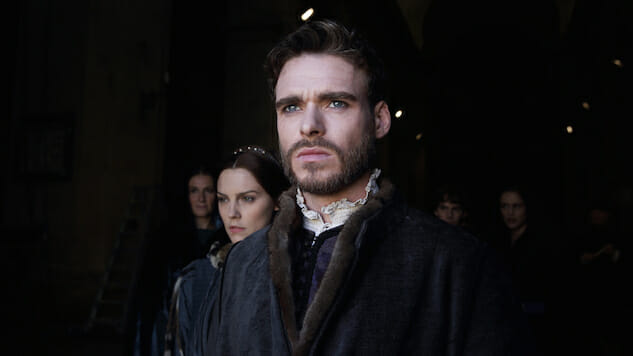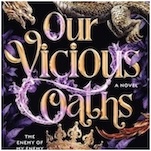The Real History Behind Medici: Masters of Florence Is More Captivating Than Netflix’s Fiction
Netflix
Historical intrigue can make for excellent TV, and Netflix’s Medici: Masters of Florence boasts an exceptionally captivating historical premise. But the series fails to capitalize on this advantage: It never captures the real Medici. Despite a talented cast, Masters of Florence immediately unravels to become a soap opera set in a Renaissance faire. While some fictionalizing is to be expected, the series goes too far to manufacture drama when the historical truth is more entertaining than the fiction.
Season One of Masters of Florence commences with the untimely death of the family’s founding patriarch, Giovanni de’Medici, and focuses on his son Cosimo’s push to assert authority over the Florentine Republic. Through a series of flashbacks, we get a clearer sense of the rocky relationship that Cosimo (Richard Madden) has with his wife, Contessina (Annabel Scholey), and how he’s long stood in the shadow of his overbearing parents. A great deal of attention is paid to the threat of rival families like the Albizzi. We are shown a Cosimo who is very much going it alone. He’s unable to trust even his brother, Lorenzo (Stuart Martin), or to put his faith in the abilities of his soft-spoken son, Piero (Alessandro Sperduti). This Cosimo is determined to gain power over the city, but we often find him at the helm of a ship taking on water.
In reality, Giovanni de’Medici did pave the way for the Medici patriarchs to use their unprecedented financial success to strategically bankroll Florence’s position as the cradle of Renaissance civilization. They were indeed masters of the 15th century, who spun a captivating international web of social, cultural, political and economic dominance. Ultimately, a fictional representation focusing on their struggles is far less engaging than the reality of their astonishing achievements. They were masters of their own fate far more often than they were the victims of foul play.
In the series, Cosimo is a reluctant banker. He is pressured to take on the family business although he wants to be an artist. Masters of Florence changes the art-historical timeline to suggest that Brunelleschi’s dome for Florence’s Cathedral—one of mankind’s greatest feats of engineering—was orchestrated by Cosimo because he was trying to spite his less artistically inclined father. The people of Florence have little faith in the project, and are quick to dismantle the dome when the Medici’s rivals convince them that the plague arriving in the city is punishment for the Medici’s questionable morality.
In reality, beneath his modest surface, Cosimo was a ruthless, Machiavellian powerbroker. Indeed, his façade was often transparent, and he displayed his peacock feathers, so to speak, whenever he wished. The Medici were arguably history’s greatest patrons of the arts: Driven by humanism, they used strategic patronage to elevate the family’s positon to unquestionable dominance over the city. Giovanni funded Brunelleschi’s dome, for instance, to solidify the family’s power—and Florentine pride rallied in support of the project. If Cosimo were portrayed accurately in Masters of Florence, as a shrewd political operator rather than an aspiring artist, the series might offer a more complex treatment of its era than one framing the Medici as heroes and the Albizzi as villains.
-

-

-

-

-

-

-

-

-

-

-

-

-

-

-

-

-

-

-

-

-

-

-

-

-

-

-

-

-

-

-

-

-

-

-

-

-

-

-

-








































